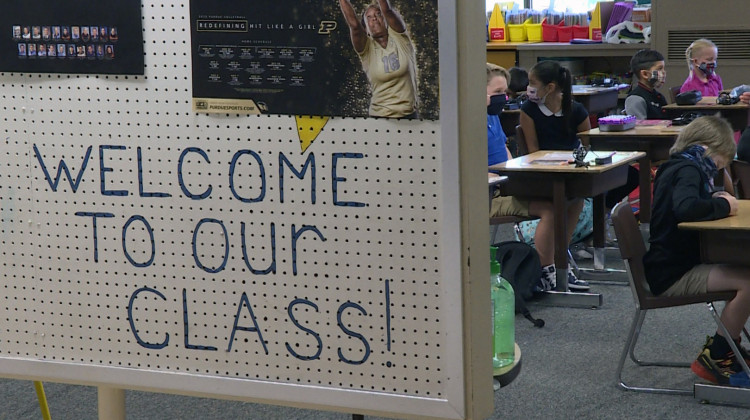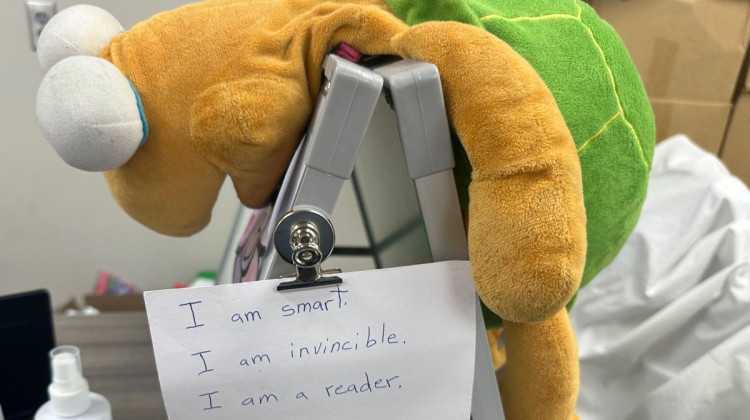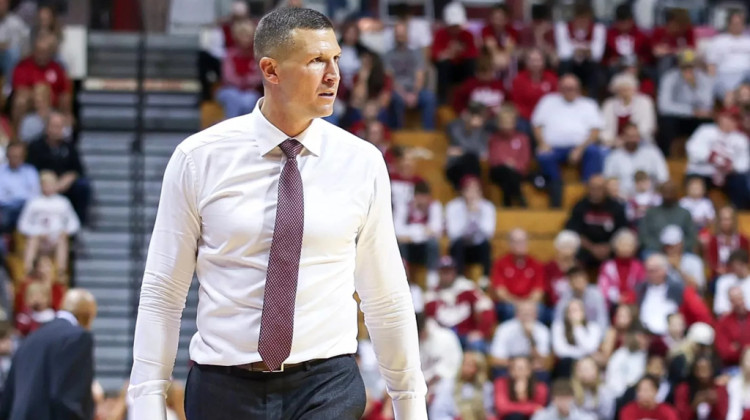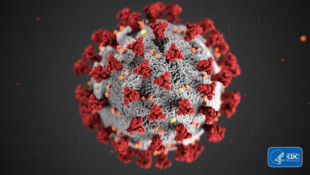
The study includes data from 73 counties, representing roughly 85 percent of the school corporations – or roughly 90 percent of enrolled students – in Indiana.
Jeanie Lindsay/IPB NewsOne of the biggest debates of the COVID-19 pandemic has been when and how to open school buildings without putting more people at risk of infection, and a recent study finds a smaller than expected relationship between in-person schooling and the spread of COVID-19 in Indiana communities.
The study looked at county COVID-19 cases, population, and then the percentage of kids attending school in-person or remotely in each county.
Gabriel Bosslet is a professor of clinical medicine at Indiana University, and helped coordinate the study. He says the research team wasn't surprised that data shows a correlation exists between community spread of COVID-19 and in-person schooling, but they were surprised at how small it was.
"It was really tiny compared to the overall increase in cases – along the lines of like, 1 percent," he said.
To put it simply: he said data shows a 10 percent increase of in-person school was associated with about a 1 percent increase in community COVID-19 cases 28 days later.
Micah Pollak is a professor of economics at Indiana University Northwest who also helped generate the study and conduct research.
He said school leaders may be able to use the report's findings as they work with parents who are still unsure about sending their children to school.
"One hope that I have for this study is that maybe it'll give them a tool to be able to go to the parents and say 'you know, these are the risks, and with those risks what do you think you want to do?'" he said.
Bosslet and Pollak both said the findings don't suggest whether or not schools should open to more kids. Instead, they say, it's a tool to better understand how the risks and benefits of in-person school stack up as the pandemic continues.
There are limitations to what people can glean from their findings.
Bosslet and Pollak both point out that the data isn't broken down by age, so it's hard to correlate certain types of schools – like elementary, middle and high schools – to surrounding community spread.
They also said the data was collected before COVID-19 variants became prevalent in Indiana, leaving new questions about how those may spread among children and communities.
Contact reporter Jeanie at jlindsa@iu.edu or follow her on Twitter at @jeanjeanielindz.
 DONATE
DONATE





 View More Articles
View More Articles

 Support WFYI. We can't do it without you.
Support WFYI. We can't do it without you.